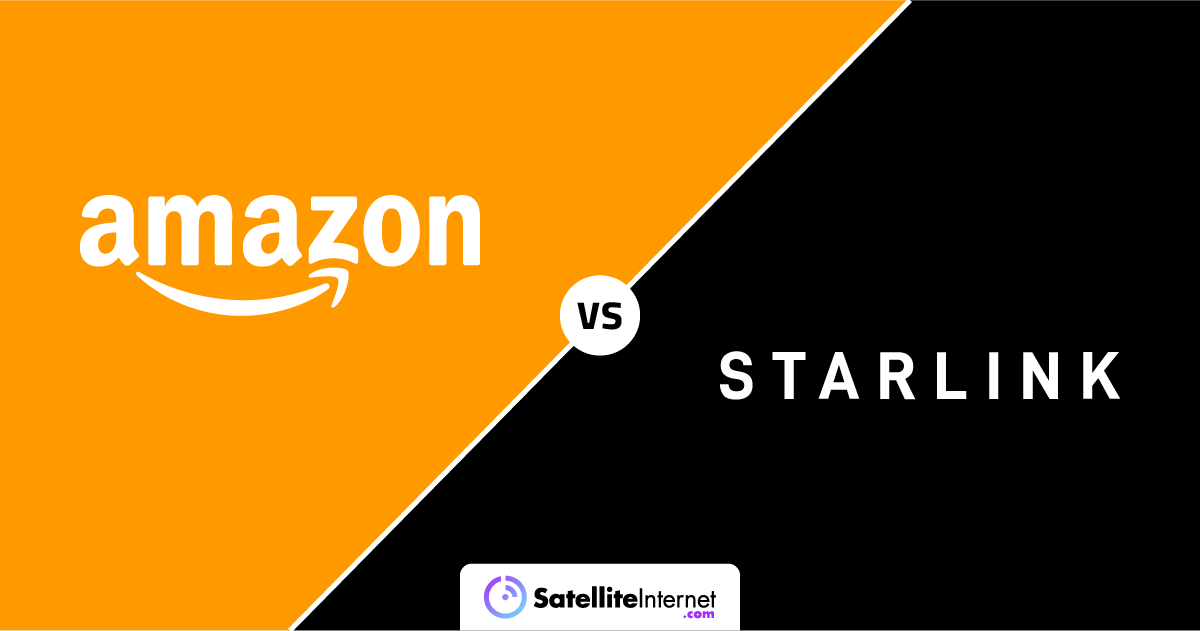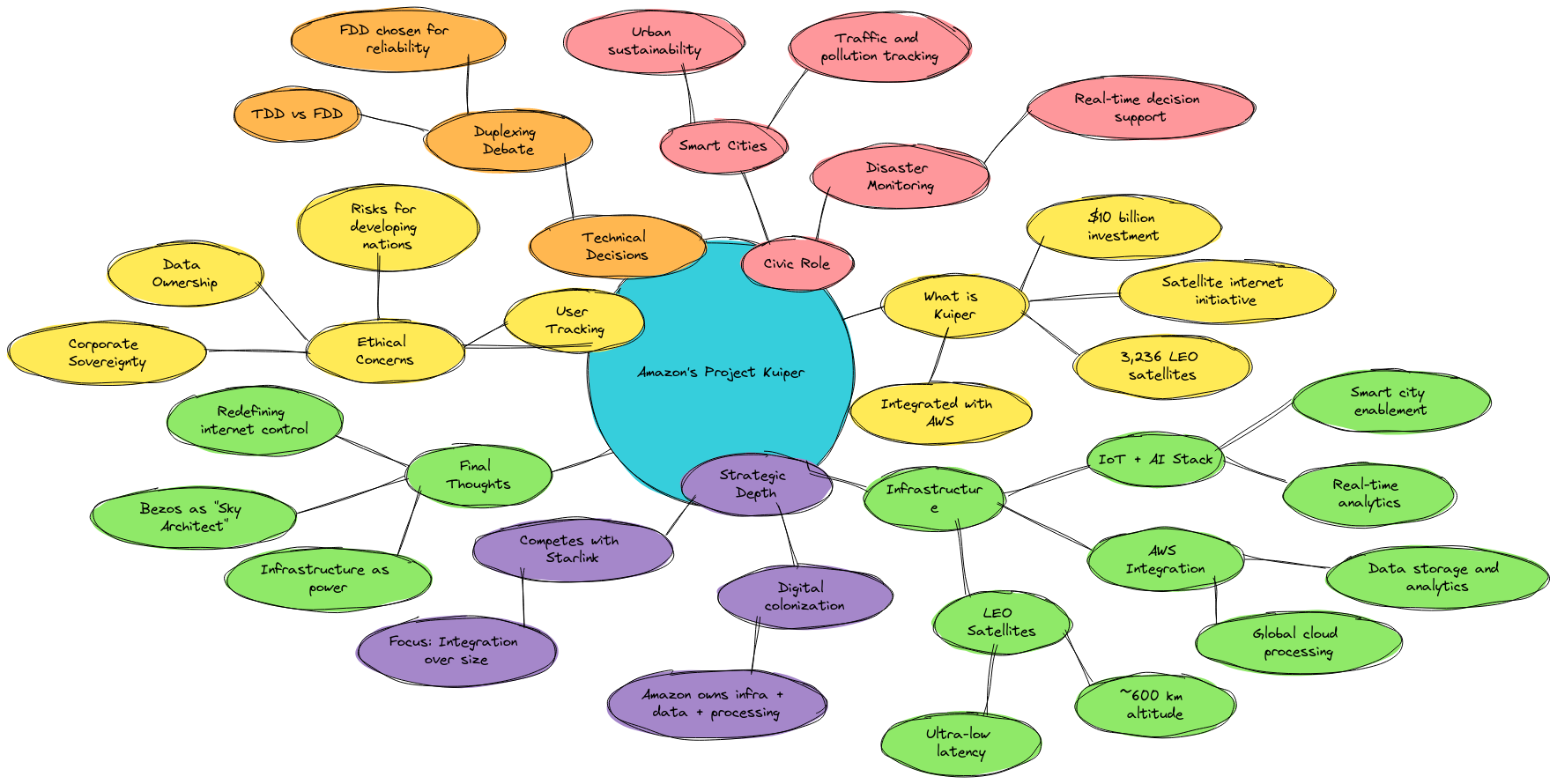
Amazon’s Kuiper Project
📡 What Is Kuiper (and What It’s Not)
Amazon’s Project Kuiper is a massive satellite internet initiative aiming to deliver high-speed broadband to every human on Earth — especially to the ones left behind by current infrastructure. With a fleet of around 3,236 low-earth orbit (LEO) satellites, this $10 billion project is not just about connectivity; it’s about who lays down the digital rails for the 21st century.
Much like SpaceX’s Starlink, Kuiper focuses on low-orbit satellites. But the key difference? Kuiper is deeply integrated with Amazon Web Services (AWS), meaning it doesn’t just deliver data — it also processes, stores, and analyzes it with the power of the cloud and AI (Korra & Sadhana, 2024).
🔍 Under the Hood: Kuiper’s Core Infrastructure
Kuiper’s system revolves around three major pillars:
- LEO Satellites: Flying around 600 km above Earth, they provide ultra-low latency connectivity.
- AWS Integration: Data is funneled directly into Amazon’s global cloud infrastructure.
- IoT + AI Stack: Environmental sensors and real-time analytics power smart systems across cities and industries.
But building a sky-spanning digital web isn’t without its hurdles. One major technical debate is about communication structure: should Kuiper use TDD (Time Division Duplexing) or FDD (Frequency Division Duplexing)? Turns out, the high orbital speed of LEO satellites makes TDD very hard to sync, so for now, Kuiper is sticking with FDD — the more reliable option for space communications (Lee et al., 2025).
🛰️ The Strategic Depth of Kuiper

Image: Kuiper vs Starlink constellation comparison
Kuiper isn’t just a tech product — it’s a digital colonization platform. Think about it:
- Amazon builds the infrastructure (Kuiper),
- Runs the servers and data (AWS),
- And processes global-scale analytics (AI).
We’re talking about digital sovereignty — not for nations, but for corporations. In a future where connectivity is currency, Kuiper is Amazon’s bet to own the bank.
🌍 ESG & Smart Cities: Kuiper’s Civic Role
According to recent research, Kuiper’s infrastructure could power urban sustainability, disaster monitoring, and real-time decision-making. By combining IoT sensors + satellite broadband + AI modeling, it creates an ideal system for tracking pollution, traffic, weather, and more (Korra & Sadhana, 2024).
In other words, Kuiper doesn’t just connect the planet — it reads it, models it, and potentially manages it.
⚖️ The Watchers Above: Privacy & Ethical Concerns
As always with massive surveillance-capable systems, questions loom:
- Who owns the data streaming through Kuiper?
- Will individual users be tracked across this satellite backbone?
- Could it create new digital dependencies in developing countries?
These concerns aren’t just theoretical. History has shown that when massive infrastructure is privatized, public interest can become an afterthought.
📌 Final Thoughts: Bezos, the Sky Architect
Amazon’s Project Kuiper is not just a bold vision — it’s a blueprint for owning tomorrow’s internet. If it succeeds, Kuiper won’t just bring connectivity to remote corners of the globe — it will redefine who controls the flow of information, commerce, and intelligence across the planet.
And in this race for the skies, whoever builds the internet highways of the future, may very well write the rules of the digital world.
